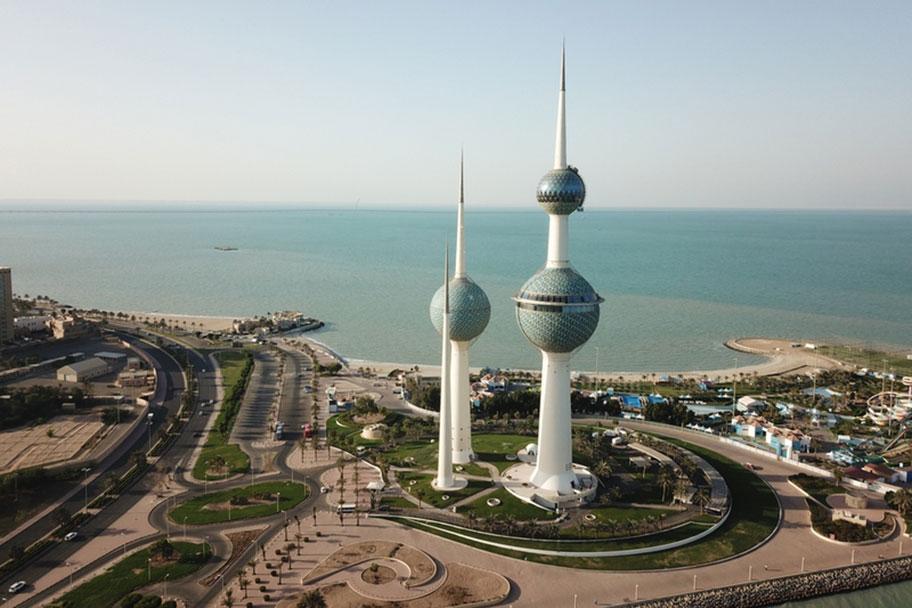Hungary: Exploring its Economic Ecosystem
Hungary, a small open economy located in Central and Eastern Europe, holds a strategic position in the region and serves as a vital link between Eastern and Western markets. As a member of the European Union (EU), the country benefits from proximity to the continent’s major economic hubs and is a gateway to the EU single market.
Economic snapshot
Hungary has long been a favourable destination for outsourced manufacturing in electronics, automotive and information communications technology (ICT) due to its competitive labour costs, which are below the EU average. As a small open economy with a population of 9.6 million, Hungary’s economic performance is significantly dependent on neighbouring markets, particularly Germany. The recent slowdown in the German economy and weakened external demand have posed challenges, putting downward pressure on Hungarian industrial output and overall economic growth.
Despite these headwinds, Hungary’s labour market remains strong. At the end of 2024, the country recorded an employment rate of 81.1% (higher than the EU’s average of 75.8%) and a low unemployment rate of 4.3% (lower than EU’s average of 5.9%), reflecting resilience in its workforce and economic structure[1]. Hungary’s economy is expected to grow by 1.4% in 2025 with a 4.9% inflation rate, according to the International Monetary Fund’s forecast of April 2025.
Opening to the East
Over the years, Hungary has demonstrated adaptability in navigating global challenges, leveraging its strategic location and robust export‑driven industries to strive for economic stability and growth. The “Eastern Opening” policy, initiated in the early 2010s, aimed to diversify Hungary’s economic connections by expanding beyond the European market and establishing stronger ties with Asian economies to achieve economic balance. Hungary was the first EU nation to sign the Belt and Road Initiative (BRI) co‑operation agreement with China. The country has successfully attracted a number of Chinese investments and projects, such as the Budapest‑Belgrade railway, which connects the capitals of Hungary and Serbia, as well as investments in electric vehicle (EV) manufacturing sites and battery production plants. In the face of evolving geopolitical dynamics and shifting global trade patterns, Hungary presents significant potential as both a gateway to the European market and a hub for supply chain diversification.
With 2024 marking the 75th anniversary of the establishment of diplomatic ties between China and Hungary, the two countries decided to elevate their bilateral relations to an all‑weather comprehensive strategic partnership in May that year. This partnership indicates a close and resilient relationship, showcasing Hungary's commitment to fostering deeper ties and collaboration with China. The strengthened partnership is expected to enhance economic co‑operation, boost trade and investment flows, and pave the way for joint ventures in various strategic sectors such as infrastructure, technology and renewable energy.
National strategy to enhance competitiveness
In March 2024, the Hungarian government unveiled a comprehensive competitiveness strategy for 2024‑2030[2] aimed at driving economic growth by enhancing the country’s performance across various industries. The strategy outlines ambitious goals, including achieving 90% of EU development levels by 2030, increasing the employment rate from about 75% in 2024 to 85%, and boosting the overall investment rate from 21% of GDP in 2023 to 30%, with corporate investment reaching 20%.
Hungary has experienced a negative external balance of products from 2018 to 2023. In 2023, exports of goods accounted for about 63% of the GDP and the government intends to increase the share to 100%. Additionally, the strategy aims to boost the share of manufacturing in GDP from less than 20% in 2023 to 30% by 2030, showing the country’s ambition to strengthen its manufacturing and industrial sectors.
The Hungarian government’s strategy has prioritised six key industries: automotive, food, healthcare, industrial materials, ICT and creative industries.
- In the automotive sector, Hungary aims to take the lead in electromobility by enhancing domestic supplier competitiveness and building a robust electric-vehicle ecosystem. The country has attracted significant investment in vehicle and battery manufacturing plants.
- For the food industry, amid geopolitical challenges, ensuring food security is the key. To achieve this target, the government will take several strategies, include protecting domestic companies, promoting Hungarian-made products, advancing digital technology, supporting suppliers in securing international partnerships, and boosting exports.
- The healthcare industry targets self-sufficiency in essential equipment by 2030, increasing the share of Hungarian products in domestic healthcare from 15% to 30%.
- The industrial materials sector, including chemicals, steel and plastics, is poised to adopt new technologies while transitioning to greener practices and securing critical raw materials.
- The ICT sector emphasises growth in the following aspects: artificial intelligence, 5G, software development and cybersecurity. The strategy strengthens the ICT supply chain through education, training, a supported start-up ecosystem, targeted funding and infrastructure investment.
- The creative industry is focusing on media, design, gaming and cultural industries. The strategy encourages innovative content production, digital media development and export growth while fostering co-operation between creative and technology sectors. It also promotes creative start-ups and improves access to international markets, positioning these industries as vital contributors to Hungary’s economic advancement.
This competitiveness strategy encompasses a wide range of parameters, demonstrating the government's commitment to achieving substantial economic advancement and positioning Hungary as a key player in the European market.
Foreign direct investment
In 2023, Hungary's total FDI position stood at approximately €107.5 billion, with European countries being the predominant investors, accounting for 86% of the FDI position. As one of Europe's car manufacturing hubs, Hungary has attracted substantial FDI in vehicle manufacturing facilities, with the sector comprising 10.4% of the country's FDI stock in 2023[3]. Given the strong emphasis on developing a complete value chain for EVs within the country, Hungary is expected to attract more investment related to EVs in the coming years.
In 2023, Hungary had more than 22,000 FDI enterprises. These businesses are concentrated in the Central Hungary region, particularly Budapest, which alone accounted for nearly two‑thirds of foreign investment companies and 45% of net foreign investment volume in Hungary, as of 2023[4]. To promote development and employment outside of the key business district of Budapest, the Hungarian authorities, such as the Hungarian Investment Promotion Agency (HIPA), have recently been promoting investments particularly in the southern regions. To incentivise investment in the country, HIPA provides tailor‑made support packages, including consultation and matching with local businesses and supplier networks, to assist foreign investors in establishing a presence. Key investment sectors include automotive and battery, electronics, life science and medtech, logistics, food and more.
Hungary’s focus on the manufacturing sector has successfully attracted foreign investors. Between 2013 and 2023, the FDI stock in manufacturing grew at a compound annual growth rate of 11.7%, resulting in a threefold increase. Significant growth was observed in FDI within electrical equipment, chemicals, machinery, basic pharmaceuticals and vehicle manufacturing.


Latest overseas investment in Hungary
Recent flagship investment projects underscore Hungary’s growing role in the global EV market and its ambition to be Europe’s EV hub. In Debrecen, Contemporary Amperex Technology Co., Limited (CATL) is constructing a €7.34 billion, 100 GWh battery plant – Hungary’s largest greenfield FDI project – set to create 9,000 jobs and supply major automakers such as BMW, Mercedes-Benz and Volkswagen. In Szeged, BYD is developing its first European EV production factory, a multi‑billion‑euro project expected to generate thousands of jobs and produce 150,000‑300,000 vehicles annually. Other notable investments include Samsung SDI’s EV battery plant in Göd, with plans for expansion to supply BMW, and CJ Foods’ production and logistics centre in Dunavarsany. These projects, supported by HIPA’s incentives and Hungary’s proximity to European automakers, reinforce the country’s position as a critical node in EV and high‑tech manufacturing.
Looking forward
Businesses seeking to expand in Europe can explore Hungary as a gateway to the EU single market, particularly those aligning with the Hungarian government’s development priorities. Hungary, bolstered by strong Sino‑Hungarian relations and its “Eastern Opening” policy aimed at market diversification, offers stable market access and business certainty for Hong Kong traders and investors amid current geopolitical tension. Hungary may serve as a strategic gateway for Hong Kong companies entering the Central and Eastern Europe market.
[1] Eurostat
[2] https://abouthungary.hu/news-in-brief/nagy-government-expects-the-economy-to-grow-by-2-3-this-year
[3] The Hungarian National Bank
Original article published in https://hkmb.hktdc.com




